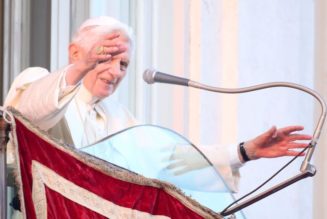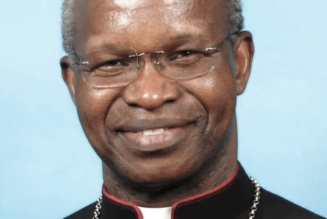ROME – As the Synod of Bishops on Synodality continues to unfold in Rome this month, it’s increasingly reminiscent of another synod just over a decade ago: The Synod of Bishops on New Evangelization, which took place under Pope Benedict XVI Oct. 7-28, 2012.
Consider the following parallels:
- Under Popes John Paul II and Benedict XVI, the “new evangelization” was understood to be a keen papal priority, perhaps the single phrase most associated with those pontiffs’ agenda, in the same way that “synodality” has become the shibboleth par excellence of the Francis papacy.
- In both cases, these buzzwords were more conspicuous by their ubiquity than their clarity. “New evangelization” started as a simple enough idea, i.e., outreach to Catholics distant from the faith, but overuse made it so elastic as to become mostly a synonym for “good” – if officialdom called something part of “new evangelization,” that meant they liked it. Similarly, “synodality” may have begun as a reference to a style of Church rooted in listening and dialogue, but a similar process of linguistic inflation is transforming it into a catch-all term for whatever the system approves.
- Both synods, to some extent, were overshadowed by a major international crisis. With the 2012 edition it was the outbreak of the Syrian Civil War, while this time it’s the spiraling war between Israel and Hamas on the Gaza Strip. In 2012, the synod tried to send a delegation to Syria to express its concern, though that idea fell apart amid doubts about security and political manipulation; it remains to be seen what gestures this synod may adopt.
- Both synods also took place at the same time as a high-profile Vatican trial following a major scandal. In October 2012 it was the first “Vatileaks” trial, which resulted in the conviction of former papal butler Paolo Gabriele for leaking confidential documents to Italian journalists, while now it’s the “trial of the century” of ten defendants, including Italian Cardinal Angelo Becciu, for various alleged financial crimes.
Those similarities are already matters of record. What remains to be seen is whether there will be a couple further points of resemblance, which we already know about the 2012 edition but where the jury is still out on this one.
First, the 2012 synod was the last great hurrah of the John Paul II-Benedict XVI era in Catholicism. Just a little over three months after it closed, Benedict, who was 85 at the time, announced his resignation on Feb. 11, 2013, setting the stage for the election of Pope Francis.
Today, Francis is presiding over the synod at the age of 86. While there’s no indication of any health crisis around the pontiff at the moment, it’s at least possible that bringing this synodal project to conclusion, including the second assembly next October, may be among the last major acts of his papacy too.
More basically, the question is whether the same fate awaits “synodality” after this papacy as befell the “new evangelization” after John Paul II and Benedict.
It was astonishing how quickly references to the “new evangelization” seemed to disappear from official argot and practice after the popes who’d sponsored the term were gone.
That 2012 synod ended with recommendations to create departments of new evangelization at Catholic universities, to open formation centers for new evangelization in dioceses, and to launch commissions for new evangelization within bishops’ conferences and other ecclesiastical structures. Very little of that ever happened, because once the ground shifted in Rome with the election of Francis, it seemed clear that “new evangelization” no longer was the apple of the reigning pope’s eye.
The Pontifical Council for New Evangelization, created to great fanfare in 2010, lasted only twelve years until it was suppressed in 2022, merged into the new Dicastery for Evangelization. Given that bureaucracies generally signal their priorities by creating departments dedicated to them, suppressing such a department usually is an equal-and-opposite sign of waning interest.
Elsewhere, the story is more or less the same. Consulting the website of the U.S. bishops, for instance, one finds that a page dedicated to the New Evangelization basically hasn’t been updated with any new Vatican texts since the late Benedict XVI years.
Of course, this isn’t to say that the energies released under the banner of the “new evangelization” have simply disappeared. Multiple efforts to reach out to lapsed Catholics sprouted up when the push was at its peak, and many of them have gone on to great success. Moreover, Pope Francis probably would argue that synodality is his own version of new evangelization, so that the idea didn’t vanish with the vocabularly but rather took on a new guise.
Nonetheless, it’s still fair to say that efforts branded as “new evangelization” no longer enjoy the same direct and explicit papal encouragement as they did a decade ago, a reminder that perceived priorities in Catholicism often shift as popes come and go.
Only time will tell if a similar disuse will surround “synodality” in the future.
But the good news for devotees of both new evangelization and synodality is that in the Catholic Church, nothing ever really disappears. Catholicism is like your grandad’s attic; everything he ever owned is still up there, waiting to be dusted off and brought back into use, when the wheels turn and it suddenly seems valuable again.







